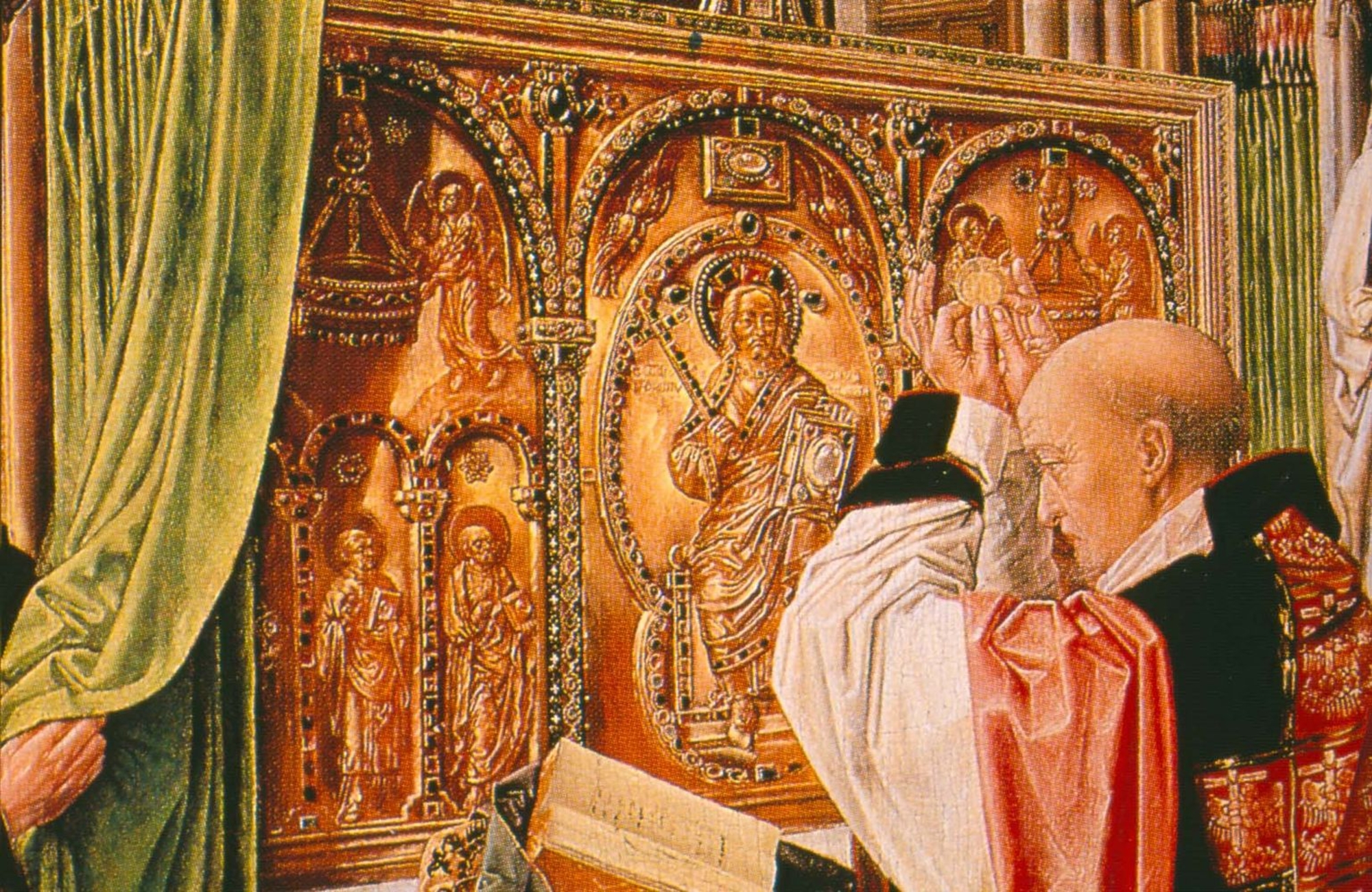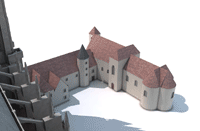- Home
- The town and the abbey
- The town within its walls
- The town in trouble times
- The monumental complex in Early Modern Times (late 16th century)
View of the Gothic abbey-church with the Valois mausoleum.
© Ministère de la culture / M. Wyss, A.-B. Pimpaud, M.-O. Agnes.
The Gothic basilica remained in its original state. The church was extended by the addition of the Valois mausoleum, a rotunda attached to the northern arm of the transept, accessed by a passageway that connected it to the basilica. Archaeology has uncovered the circumference line of the building and the floor plan of the interior space, thus clearing up a number of questions that have arisen from fairly contradictory sources. The mausoleum measured thirty meters in diameter. Inside, the space was organized into six trefoiled chapels organized around a hexagonal central area. On the outside of the edifice, two rows of pilasters and half-columns alternated with niches and windows. The dome was never built and the structure was left unfinished, covered by a provisional cone-shaped roof, which was topped with a lantern that is clearly visible in old drawings.
Following a reworking of the vaulting in the dormitory, the buttressing system was eliminated from the monks' building In the cloisters, supports for the flying buttresses were removed. The interior arrangement of the kitchens building also shows signs of reworking, and the structure-its walls pierced with modern windows with rectangular panes-was covered by a pitched roof. The elevation of the various outbuildings also testifies to modifications.
The Saint-Paul church was destroyed in the wars, and the canons withdrew to the Saint-Pantaléon chapel, which was reconstructed in the church's northern side aisle. The rectangular building was probably covered by vaulting, which was supported by partially reconstructed buttresses. To the east, the church's choir was flanked by a sacristy, built against the ruins of the apse of the old collegiate church. The Saint-Pierre and Madeleine churches do not appear to have undergone major changes. On the other hand, the Saint-Michel-du-Charnier church was expanded to the north by the addition of a chapel dedicated to Our Lady, and a sacristy that enclosed the former porch-bell tower. The chapel, covered with a pitched roof, opens onto the church's interior with a row of two columns that is clearly visible in old drawings. The ruined Saint-Barthélemy church was not rebuilt. On the other hand, the choir of the Saint-Michel-du-Degré church was rebuilt with a trefoiled choir. In the same way, the nave of the Sainte-Geneviève church was extended to the south by means of a new exterior wall. Its western façade was given a bell tower, whose ground floor held the vestibule of a new entrance to the church. The house of the last Supper was also remodeled, and excavations confirm that an octagonal spiral staircase was added, half built into the façade that gave onto the cemetery.
View of the remodeled cloister.
© M. Wyss - 3D graphics by A.-B. Pimpaud / M.-O. Agnes.
View of the Saint-Pantaléon chapel set up in the ruins of the Saint Paul collegiate church, and the Madeleine, Saint Peter and Saint-Michel-du-Charnier churches.
© M. Wyss - 3D graphics by A.-B. Pimpaud / M.-O. Agnes.
View of the Saint-Michel-du-Degré and Sainte-Geneviève churches and the house of the last Supper.
© M. Wyss - 3D graphics by A.-B. Pimpaud / M.-O. Agnes.




